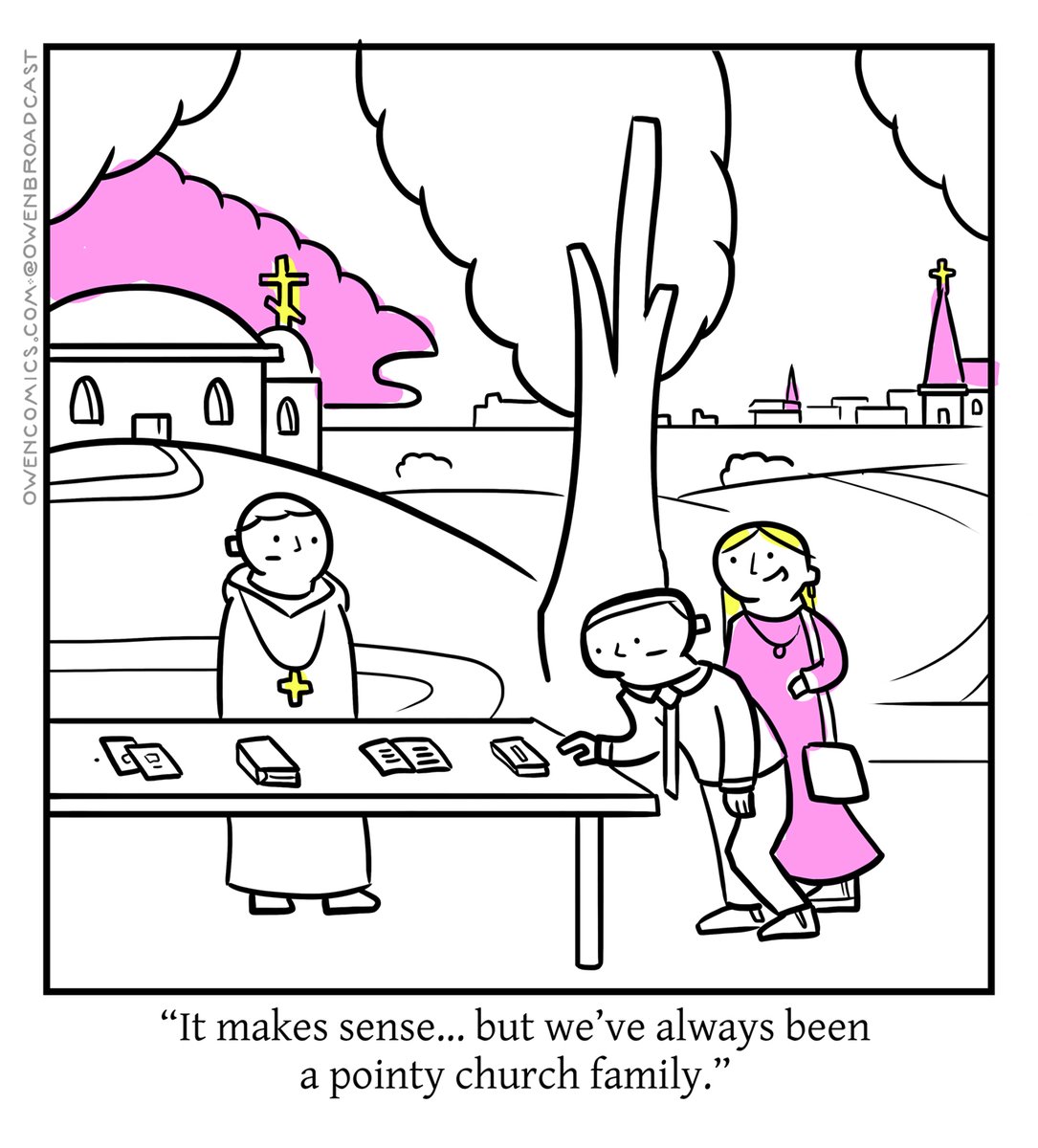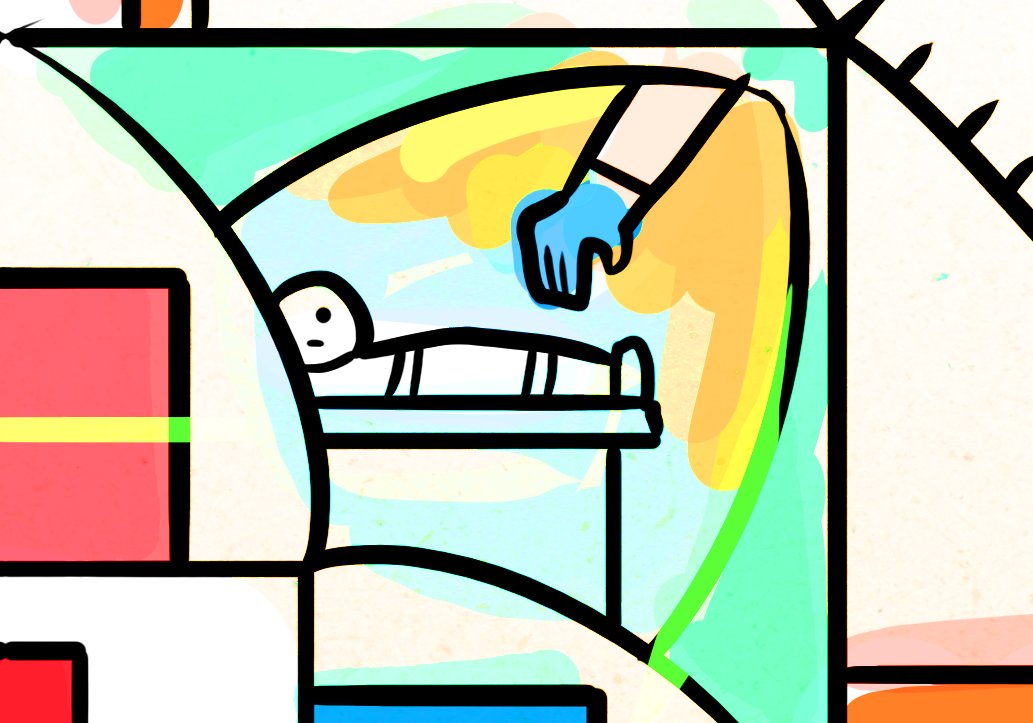[hyper low american church aesthetics]
the strip mall church. often presented online as the ultimate symbol of american christians dropping the ball somewhere along the historical timeline. plastic signs and conference room vibes. post it next to a cathedral. just do it.
...
the strip mall church. often presented online as the ultimate symbol of american christians dropping the ball somewhere along the historical timeline. plastic signs and conference room vibes. post it next to a cathedral. just do it.
...

it writes itself. look at this, then look at this medieval basilica. you can draw whatever conclusion you want. these people don't care about aesthetics, relationship of beauty to the divine, maybe they mean well but their tradition has failed them. its a great box to stand on. 

but is that really why it looks this way, and why this exists?
maybe. but perhaps there are other factors. complex historical social material aesthetic conditions that led us here, to the eternal life church next to an HR block with linoleum floors.
lets go, to... the amish.
maybe. but perhaps there are other factors. complex historical social material aesthetic conditions that led us here, to the eternal life church next to an HR block with linoleum floors.
lets go, to... the amish.

i have mentioned that i live in a place with a variety of what they call “plain people”. amish, some mennonites, some pentecostals, who do “the thing” where they all dress similarly, usually in clothes that look relatively similar.
did you know, some have no buttons?
did you know, some have no buttons?
https://twitter.com/owenbroadcast/status/1812197683580539234
some of the mennonite men have no buttons on their clothes. i noticed this
what a guy told me is that in some communities they have no visible buttons because it would start a kind of aesthetic arms race. one guy gets silver buttons, one guy gets brass buttons, now its a thing.
what a guy told me is that in some communities they have no visible buttons because it would start a kind of aesthetic arms race. one guy gets silver buttons, one guy gets brass buttons, now its a thing.

now one person has engraved buttons, and now everyone is noticing the buttons and talking about them
this is interesting, because its kind of an anti-aesthetic maneuver. its chaining up the aesthetics to the maximum extent
but they often look great. they at least dont look bad
this is interesting, because its kind of an anti-aesthetic maneuver. its chaining up the aesthetics to the maximum extent
but they often look great. they at least dont look bad

its odd to ask what these people's relationship to aesthetics is. they look great. all their stuff looks really nice, to us.
but is that incidental? it doesnt seem like they sat down and decided what materials looked nice and chose wood and certain cloths for aesthetic reasons.
but is that incidental? it doesnt seem like they sat down and decided what materials looked nice and chose wood and certain cloths for aesthetic reasons.

in fact, it kind of feels like the opposite. this is just what made sense for them to use at that time, either for practical reasons, availability, cost, and it got frozen in that modality due to an aversion to modern technology. or, it just makes sense for them to use it.
its very aesthetic, but because of the practicality of it. if these same people, with the same mentality today, started their whole operation anew, maybe they'd be using whatever materials normal people use today
in a way, the strip mall church and this below image are similar:
in a way, the strip mall church and this below image are similar:

i believe the mennonites are a form of anabaptist. i would describe the anabaptists as one of the main christian wings with the largest aversion to partnering with any form of state power.
thats why they got killed all over europe, but were able to set up shop here, in the US.
thats why they got killed all over europe, but were able to set up shop here, in the US.

regardless of real "on paper" historical influences, the anabaptist vibe towards state power definitely reverberated out into the nascent US consciousness, in my opinion. you can feel this in the US vibe: separation of church and state, government skepticism, and so on.
this is also generally pathologized online, so, although i do not subscribe to this view, lets take one second and hear it straight from one of them. it is interesting to see how an intelligent person could feel this way, even if we don't agree.
this is david bercot:
this is david bercot:

an analogy i got from him regarding this was basically, to oversimplify:
God, kingdom of heaven, all that - is like white paint. its totally white. evil, the devil - that's like black paint
part of the operation of evil is that it doesnt care how much white paint you add to it
God, kingdom of heaven, all that - is like white paint. its totally white. evil, the devil - that's like black paint
part of the operation of evil is that it doesnt care how much white paint you add to it

the devil is fine with you pouring as much white paint into the black paint as you want. doesn't matter. go for it.
he just wants to get a drop of black paint into the white paint. then, it's no longer white. then its over. no more white paint.
so, its kind of all or nothing.
he just wants to get a drop of black paint into the white paint. then, it's no longer white. then its over. no more white paint.
so, its kind of all or nothing.
this is how he depicts the anabaptist vibe towards state power. you can go in the room and try and do all the good you want, and probably will be able to, but ultimately, you're going to get some of the black paint in the white paint. then its over. so, you just shouldnt do that
im not saying i feel that way, but its relevant, as that feeling towards the state, power, money, all that, really reverberates out into american christianity. i think few american christians would articulate it that way, but some of that is in the mix
and, its related to this:
and, its related to this:

because to get an indoor situation that looks like the below image, you need to partner with state power.
no one is a bigger fan of this than me. im an artist so, gold, the black and white pillars, im there. lets go. but this requires a lot of straight up brute force to obtain:
no one is a bigger fan of this than me. im an artist so, gold, the black and white pillars, im there. lets go. but this requires a lot of straight up brute force to obtain:
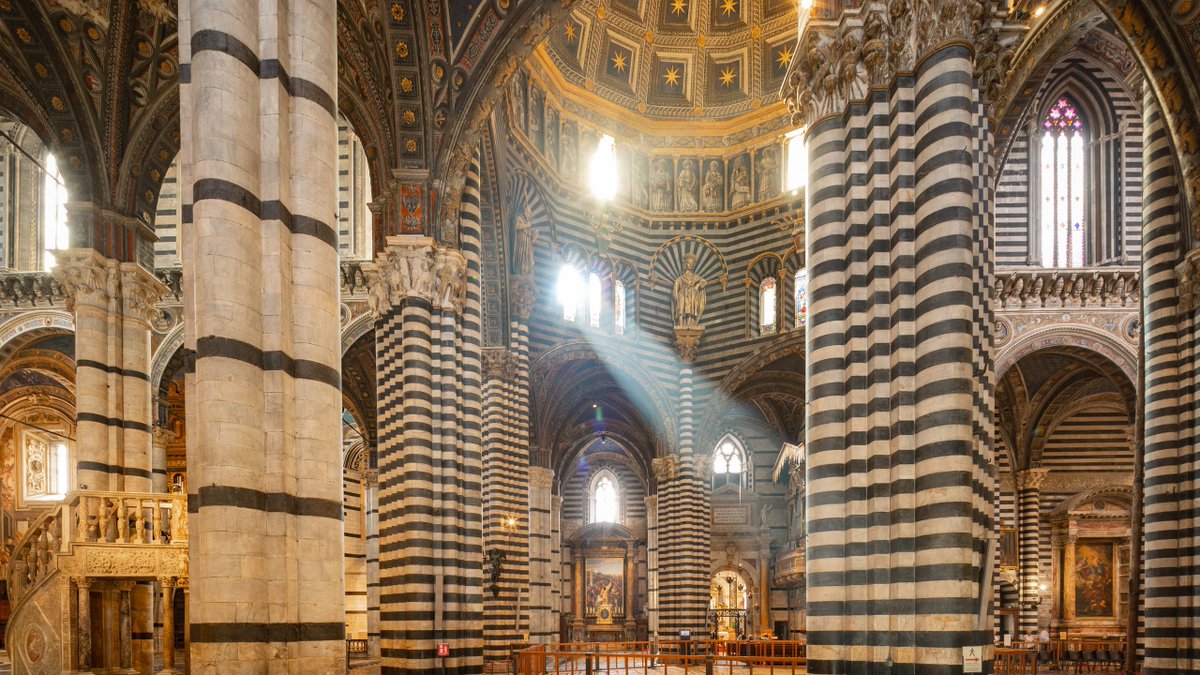
one interesting case study for the american christian aesthetic is a place called cane ridge in kentucky. a movement started here, called the restoration movement. their whole thing was "just being christian" and dissolving all denominations, charters, all that stuff. check it:



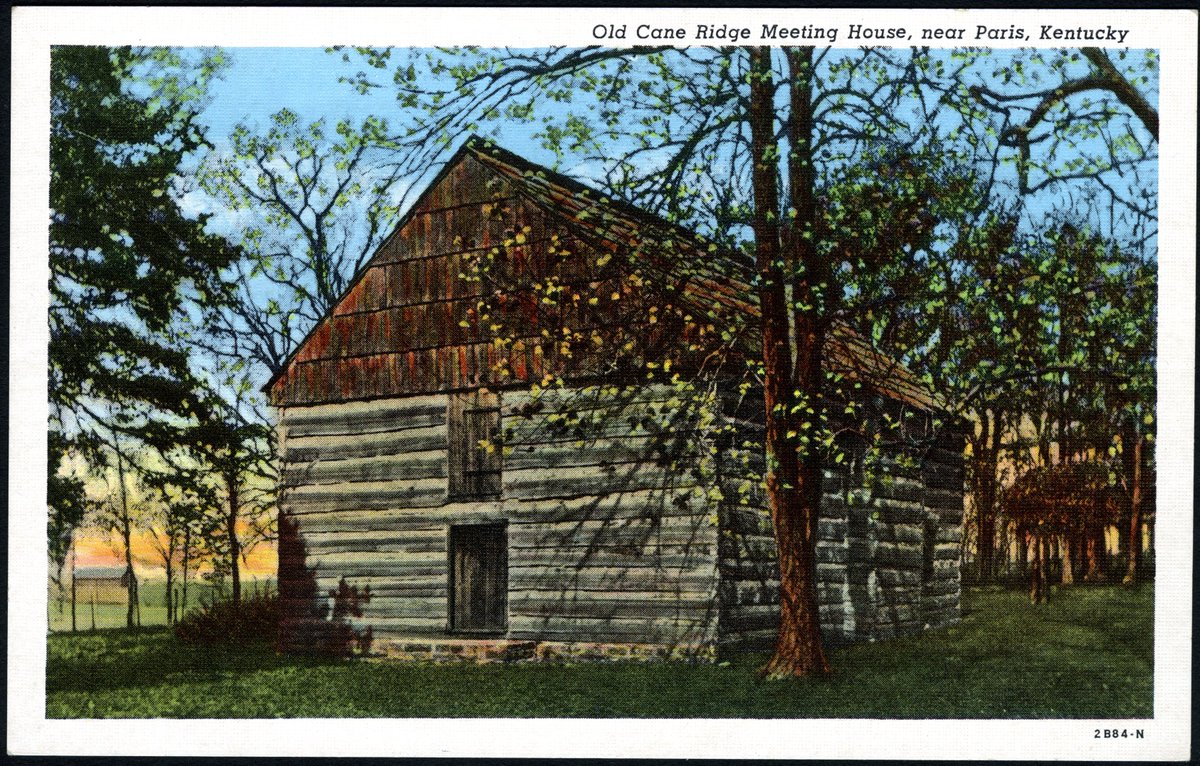
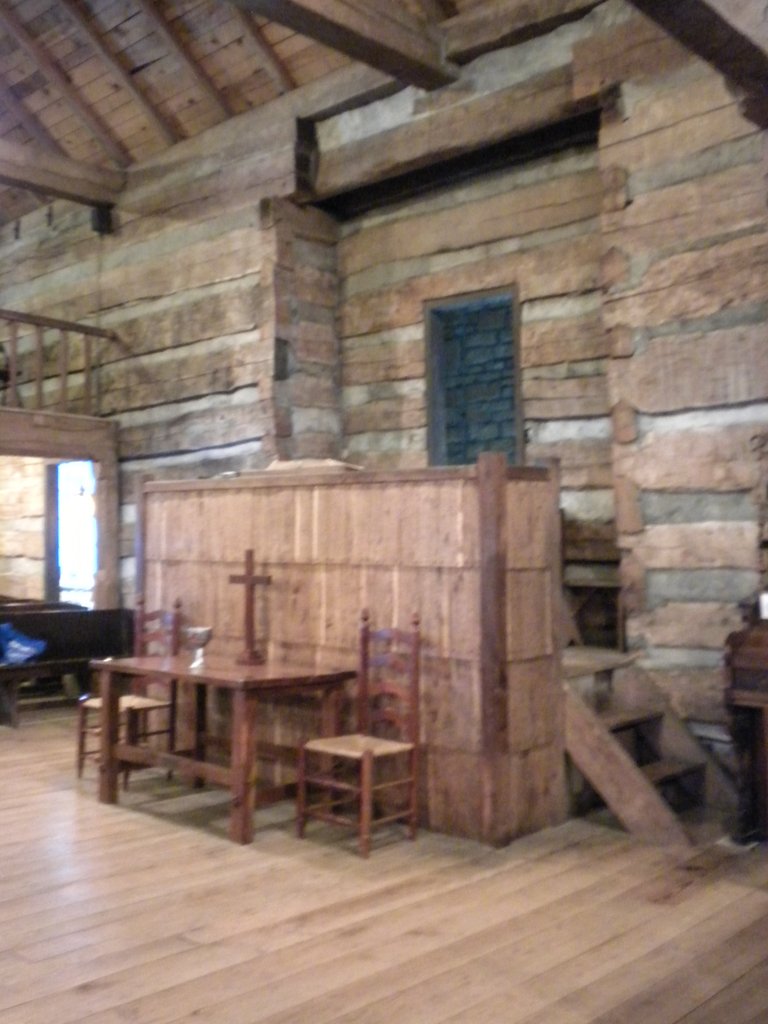
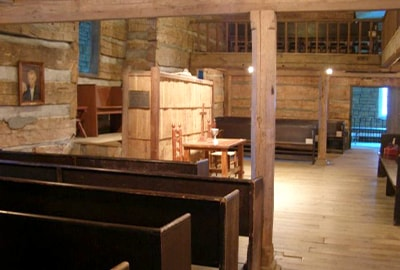
its literally a cabin. and it looks nice, at least nicer than the holiday inn conference room vibes, because its a real wooden cabin.
but, if something like that happened now... it probably would be in a strip mall.
at the time, they didnt have to worry about how it looked.
but, if something like that happened now... it probably would be in a strip mall.
at the time, they didnt have to worry about how it looked.
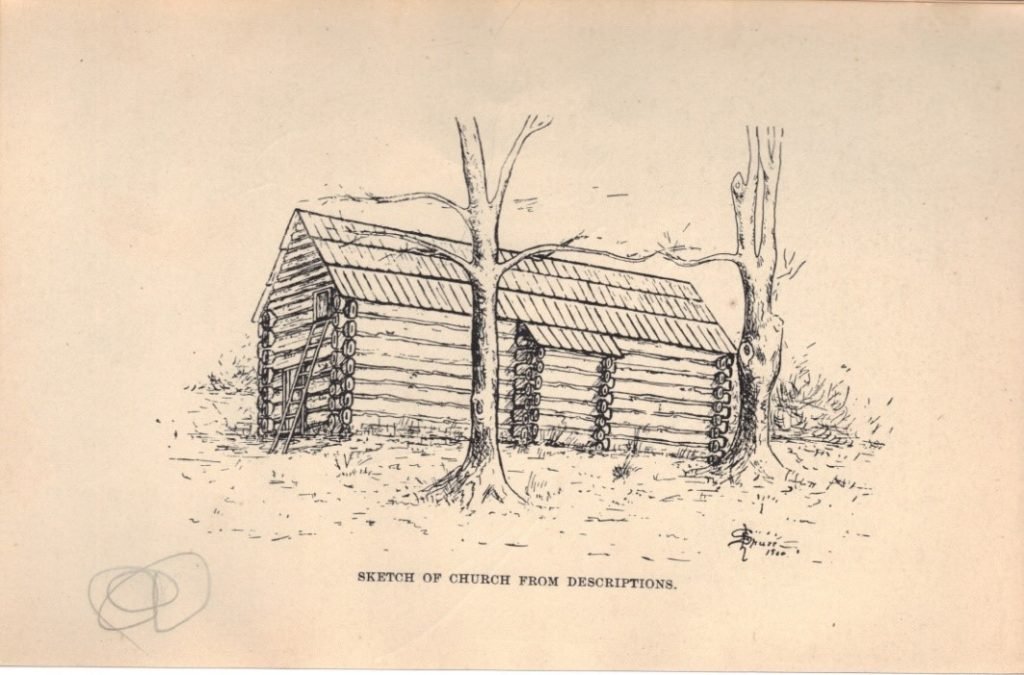
because, at the time, there was no linoleum flooring or plastic walls. everything just kind of looked nice, i guess.
all the above factors came together before cheap materials took on that holiday inn conference room vibe.
so, the aversion to cheap materials wasn't baked in.
all the above factors came together before cheap materials took on that holiday inn conference room vibe.
so, the aversion to cheap materials wasn't baked in.
they had no real reason to build a fence around the modern plastic aesthetic because it didnt exist yet
if all this coalesced now, maybe they would. maybe there would be a rule like, "no gold, but also no plastic." its interesting to think about what this would have resulted in
if all this coalesced now, maybe they would. maybe there would be a rule like, "no gold, but also no plastic." its interesting to think about what this would have resulted in
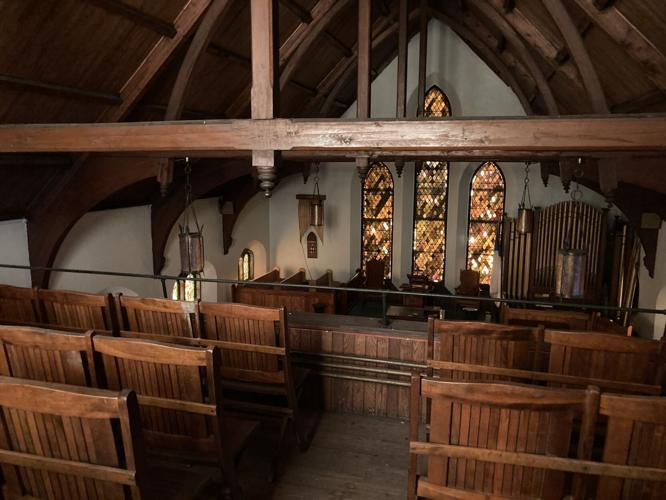
you see people post pictures of these cheap looking buildings online, and its easy to frame it in terms of apathy or ignorance. its harder to grapple with it in terms of interlocking ideological, social, and historical factors that were a result of their time.
pizza hut church.
pizza hut church.

[1]. footnote, related:
if you'd like to read more about something to related to this (anabaptists, america, third position non-mainline protestant groups), this is a thread from last year:
if you'd like to read more about something to related to this (anabaptists, america, third position non-mainline protestant groups), this is a thread from last year:
https://x.com/owenbroadcast/status/1650255348928765953
my manager said i have to post this here (theres a comic about the restoration movement in this book, and one about menno simons, who the mennonites are named after)
https://x.com/nihilists4jesus/status/1817635333212967021
• • •
Missing some Tweet in this thread? You can try to
force a refresh

